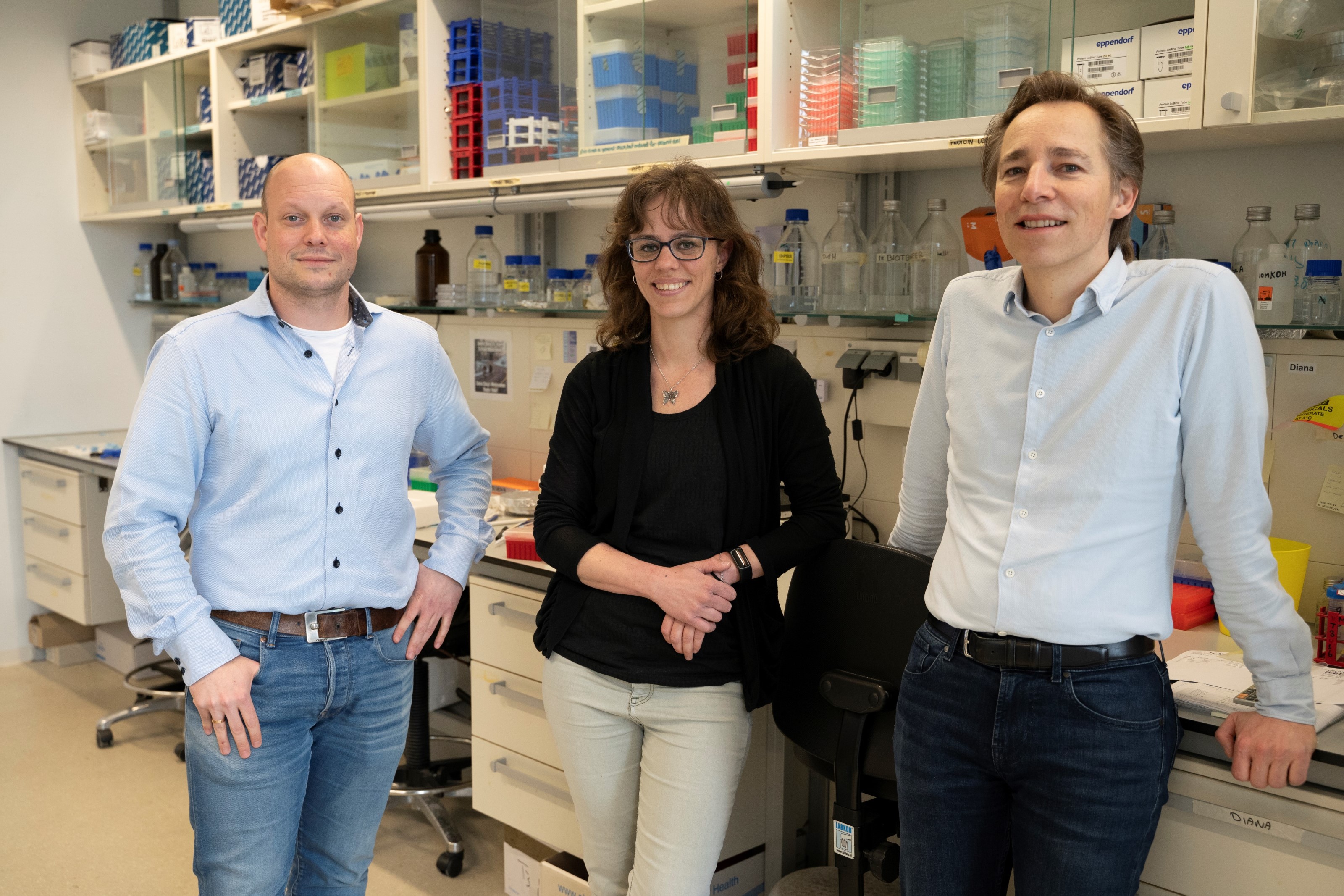Collaboration between clinic and lab clarifies cause of rare symptoms and provides new insights into DNA repair
DNA researchers Martijn Luijsterburg and Diana van den Heuvel with dermatologist Remco van Doorn
&width=826&height=464)
Xeroderma pigmentosum (XP) is a rare condition. Due to an error in the DNA repair process, sunlight causes a lot of damage in the genome of these patients. "As a result, they are extremely sensitive to sunlight and develop skin cancer," says dermatologist Remco van Doorn. "However, not the two patients I saw in my consulting room recently." Although these siblings with XP were more sensitive to sunlight, they mainly suffered from neurological problems, such as a coordination disorder.
Exploring DNA
But so far no skin cancer, and that is rather strange for this disorder, Van Doorn thought. To figure out exactly how this works, he knocked on the door of molecular biologist Martijn Luijsterburg, group leader at the Department of Human Genetics. "We scrutinised the DNA of these patients to find an answer to this question," says Luijsterburg.
In doing so, they looked specifically at how DNA damage in these patients is repaired. "Normally, this takes place in two ways. The first, global genome repair, clears the bulk of DNA damage. The second, transcription coupled repair, clears the damage that gets in the way during transcription of the DNA," Luijsterburg explains. Both ways use the repair protein XPA. "We found that these patients had exactly the same error in the XPA protein."
One error, two effects
But what exactly is the effect of this error? To find out, Diana van den Heuvel, a researcher on Luijsterburg's team, made cells in the lab with the same error in the XPA protein and compared them with cells from the patients. "We found out that the global repair pathway was still pretty much intact. So the DNA is still repaired reasonably well this way. This explains the slight sun sensitivity and the lack of skin cancer," Van den Heuvel thinks. The other repair process nearly stopped working. "We think the damage that remains in the DNA due to the absence of this repair pathway is responsible for the neurological problems." A good example of how one DNA error can have multiple and varied consequences.
From clinic to lab: a successful collaboration
"It is extraordinary that a question arising from a clinical observation leads to new insights into such a fundamental process as DNA repair," Van Doorn believes. "This research shows once again how complex the repair of UV damage in DNA is. Understanding this process helps us to gain a deeper understanding of why some people develop skin cancer and others do not."